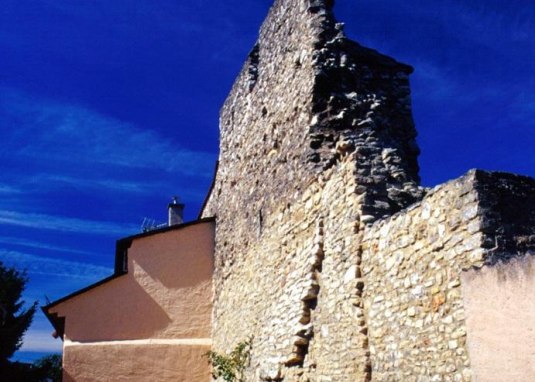The Carolingian founding building of the Kaiserpfalz Ingelheim was based on tation and almost unpaved. Only in the Staufer time took place Initiated by Friedrich I. Barbarossa (1122−1190) the conversion to a defensive adhere to fortification. He had the Palatinate renovated around 1160, enlarged te their base and had protective walls built. This learned the Kaiserpfalz a profound functional change: from the representative Palace of the Carolingians and Ottonians developed into an imperial castle.
The defensive wall, which is still visible today in many places in the Kaiserpfalz area was originally 270 m long and its oldest parts come from the 12th Century. Until the 17th century it was repeatedly repaired, reinforced and adapted to the advances in weapon technology. The defense The corridor was probably roofed over and over wooden walkways and stairs accessible.
Many residential buildings in the Palatinate area were directly attached to the strong, stable defensive walls built on. This saved building material, costs and effort. Simultaneously this practice contributed to making the defensive wall visible in many places to this day to obtain. At the circular route station "Staufische Heizanlage" (Karolinger- street no. 5) the defensive wall is accessible and offers a panoramic view over the Kaiserpfalz area and the Rheingau.
searchMenu
